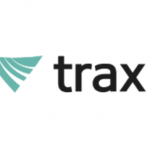The past few months have been extremely challenging for all businesses. For those operating in the manufacturing space, in particular, there have been many hurdles to overcome. Following a brief pause in operations at the beginning of the pandemic, manufacturers have had to contend with major workforce, supply chain and demand disruptions.
The manufacturing industry, like most others, is looking to new business models to help in this ‘new normal’, and many are making the switch to a service-oriented model using subscription offerings. The 2020 edition of our Subscription Economy Index (SEI), designed to measure the health and growth of subscription businesses across various industries, found that subscription companies outperformed their product-based peers by wide margins, growing revenues approximately 6X faster than S&P 500 companies.
In manufacturing, subscriptions are typically tied to a service, often those made available through IoT enabled devices and technology. IoT-fuelled subscriptions can help to extend the lifetime of products, providing customers with more data insights and a reduction in operating expenses. For example, instead of selling a product as a one-time transaction, a manufacturer may sell regular maintenance, safety analysis or location tracking for devices as a subscription. The recurring-revenue model that these subscriptions provide has proved essential during this time of economic uncertainty, enabling manufacturers to scale their services and adapt in order to meet the needs of their customers. In fact, our recent Subscription Impact Report found that half (50%) of subscription-based companies were still growing and had not seen a significant impact to their subscription growth rates amid the pandemic.
How subscriptions can support growth
The ability to scale is crucial to manufacturers, both in terms of immediate recovery and also for long-term success. Despite facing a number of challenges during today’s pandemic – including supply chain, workforce and demand disruptions – data suggests that the outlook for the manufacturing sector is strong, as manufacturers look to reinvent their business models around digital offerings.
Following the brief pause in operations – as many factories were forced to close – most workers were deemed essential and were able to return to work. This led to an uptick in revenue, especially for manufacturers monetising with subscription-based digital services, who outperformed their S&P counterparts as they rebuilt after shutdowns In fact, Manufacturers in the Subscription Economy Index saw 7% revenue growth in Q2 2020, whilst the S&P 500 Industrial Sector suffered – 8.1% growth.
The rebound among the subscription-based manufacturers could have been in part due to the tactics a recurring-revenue model enables. For example, many increased their free trial offerings, which allowed them to address customer needs and eventually increase demand after a multi-week manufacturing pause.
Historically, much of the growth of digital subscription services in manufacturing has been prompted by the need for companies to look for ways to increase efficiencies and cut costs. The pandemic brought with it serious gaps in the global supply chain as factories were forced to shut following concerns around employee health. This, alongside the resulting financial crisis that we are currently facing, has only compounded the need to maximise return on investments.
This is where IoT can help. Many manufacturers are taking advantage of IoT, alongside other forms of automation, in order to reduce worker density and increase machine productivity in an effort to ensure safety and continuity in the long-term.. As well as using the connectivity of IoT to improve operations, some manufacturers sell after-market connectivity that tracks the condition of a product in the field.
Although subscriptions have been around for decades, most manufacturing companies have moved beyond thinking of subscriptions as allowing the customer to pay for a product over time, and now realise that the more powerful ideas in IoT are about introducing new digital services around their connected products in order to build lasting customer value. The rise of the IoT has maximised their value and increased their popularity in the manufacturing sector. As mentioned above, the stability of the recurring revenue model has been a key growth strategy during the pandemic, and many manufacturers have shifted more of their business to subscriptions.
Monetising with Services: Konecranes & Sonos
Sonos became popular as a manufacturer of great quality speakers that can be used in sync across the home. Renowned for its open platform, unparalleled sound experience, and user-friendly experience, the company has partnered with more than 100 subscription-based streaming providers including Spotify, Apple Music and Pandora, is compatible with all major voice assistants, and Sonos has also partnered with IKEA to make sound-enabled furniture.
In April 2020, Sonos launched its own radio streaming service, which was originally an ad-supported service offering a mixture of genre-based radio stations, artist-curated stations and live radio. The service quickly gained popularity, becoming the fourth most listened to service on the platform, and in November 2020, Sonos introduced a subscription offering with a monthly fee: Sonos Radio HD. This new and improved offering gave users an ad-free listening experience, lossless CD sound quality, and the ability to pause, skip, and replay songs . Sonos has said that radio represents 50% of all listening time across their products.
Another company reaping the rewards of an IoT subscription-based model is Konecranes, a manufacturing company specialising in cranes and lifting equipment.
From smart lifting equipment, to predictive maintenance services, to the automation of its port systems, digitised subscription offerings presented a clear opportunity for Konecranes to grow its business and stay ahead of the competition. Subscriptions weren’t new to Konecranes – they had previously been providing maintenance services for years via a one-size-fits-all annual contract, but this model didn’t provide them with enough flexibility to keep up with the constantly changing digital services.
The company broke down this one-size-fits-all model into individual component subscriptions on a monthly or quarterly basis, giving customers the chance to mix and match services based on the specific needs of their business. These new options of shorter subscription durations also encouraged customers to experiment with new services.
By understanding exactly which parts of the package each customer uses, Konecranes is able to segment customers and target opportunities to upgrade or sell new products more effectively. In just one year, Konecranes was able to go to market with 100% more product rate options which helped contribute to a year-on-year increase of 29% in active subscribers and 10% increase in new subscribers.
In a very challenging time for businesses, subscriptions have helped to not only sustain, but grow the manufacturing industry. With the ability to better scale their services and use subscription insights to adapt to the current climate, they’ve not only survived, but thrived. As many businesses enter a long road to recovery, those that keep their customers’ needs first by offering value-driven services will be the ones that get ahead long-term.







